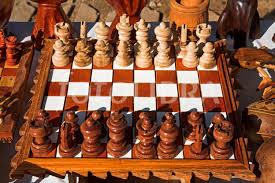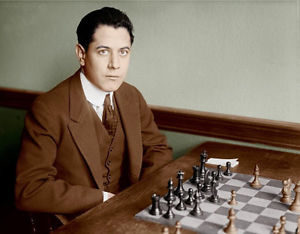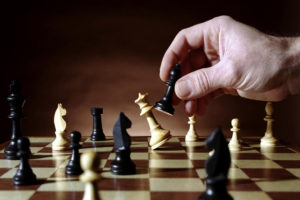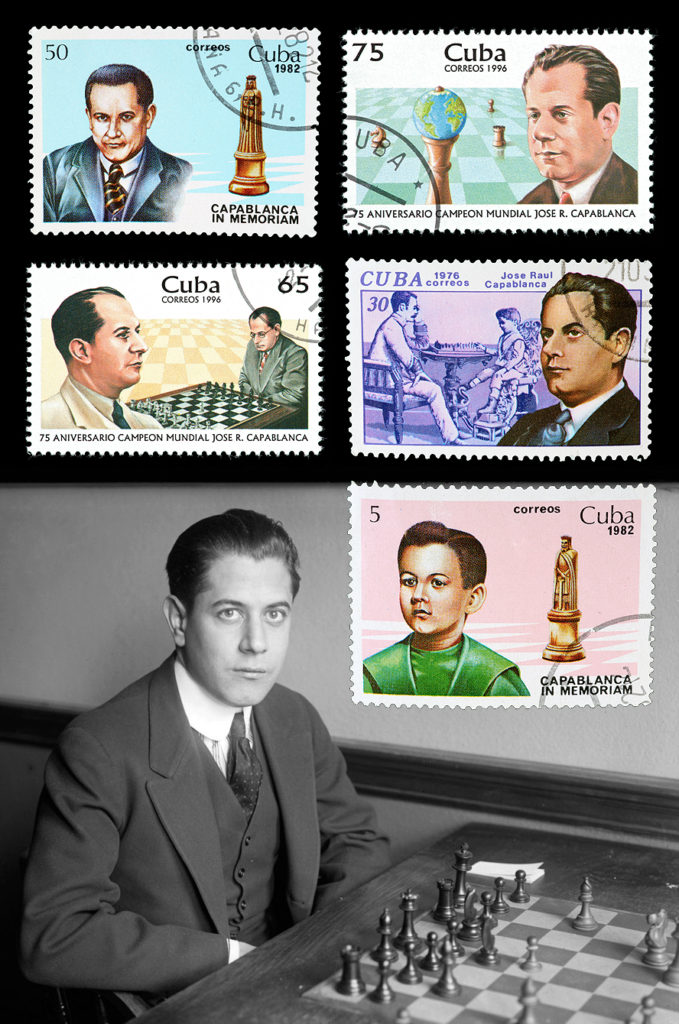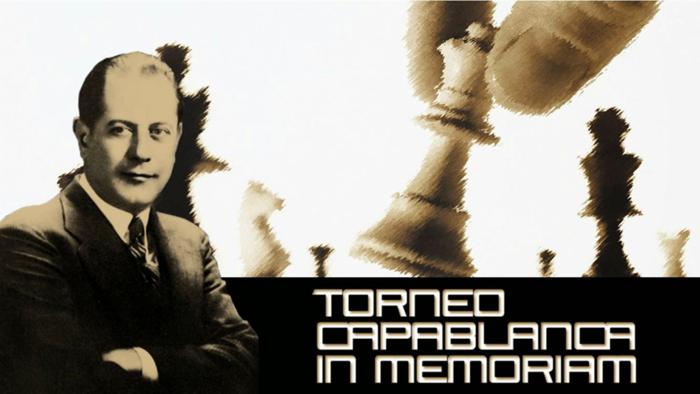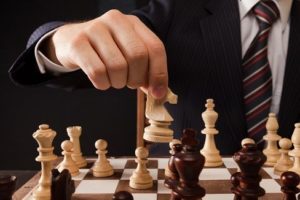 CHESS: CUBA, FIRST COUNTRY OF THE NEW WORLD IN ITS PRACTICE. HISTORY.
CHESS: CUBA, FIRST COUNTRY OF THE NEW WORLD IN ITS PRACTICE. HISTORY.
It was Cuba in 1518, the first country of the New World in which chess is practiced, as witnessed by historical documents and in 1861 it is “El Dorado de Ajedrez”, the first specialized magazine in chess in Latin America.
In 1518 the first chess game was played on the island of Cuba, carried out by a group of Spanish officers in the village of San Salvador de Bayamo. Already in 1826 its practice became patent in the cities of Havana and Bayamo.
Próceres de la Patria cubana played Chess: Carlos Manuel de Céspedes translated “The Laws of the Chess Game” from French, José Martí also played, and even one of his games is kept. Other prominent Cubans such as Antonio Maceo, Perucho Figueredo, Juan de Jesus de Fornaris, etc., also played Chess.
The fact of having had from 1840 a monthly magazine specialized in chess and of taking place in Cuba 2 world championships before the appearance of the Capablanca phenomenon, gives us idea of the development of this sport in Cuba. And if we add him as 3rd World Champion and one of the best chess players of all time, there are plenty of reasons for this publication.
But there is more, in 1836 the automaton arrived in Havana, known as “The Turkish Chess Player”, invented in 1769 by the wise Wolfgang Kempelen, an Austrian, pretending to be a chess playing machine. In the capital offered few exhibitions for having contracted the yellow fever the player that was hidden in its interior by then, the French Schlumberger.
Pablo Morphy, one of the greats of Chess of all time, arrives in Havana in 1862, from New Orleans, in transit to Spain. He took advantage of his stay from October 16 to 30, to offer a blind chess exhibition against amateurs.
In 1863, Celso Golmayo, lawyer, champion of Chess of Spain, fixed residence in Havana, as Prosecutor of the Contentious Court. Its game strength contributed to the best progress of Chess in the capital. In 1864 Morphy again visits Cuba, this time coming from Europe in transit to New Orleans. Among his opponents was Celso Golmayo, who was already considered the Chess Champion of Cuba.
On September 15, 1885, the “Chess Club of Havana” is officially established. Among the regulars attending this club was the Cuban scholar Carlos J. Finlay, discoverer of yellow fever. Celebrities from the chess world who joined the 19th and 20th centuries, among them W. Steinitz (1888, 1889 and 1892); M. Chigorin (1889, 1890 and 1892); I. Gunsberg (1890); J.H. Blackburne (1891), Am. Lasker (1893, 1906 and 1921); H.N. Pillsbury (1900); F. J. Marschall (1913); A. Aliojin (1939); R. Fine (1942); M Euwe (1945), among others.
In 1889, during the months of January to March, they faced each other in Havana for the world title, Wilhelm Steinitz, Austrian, World Chess Champion and his challenger Mikhail Tchigorin, Russian. Steinitz retained the crown by beating his opponent with the result of +10 -6 = 1.
Three years later, in 1892 and also in Havana the second meeting (rematch) Steinitz – Tchigorin takes place. The event was held in the Chess Club of Havana, with an elegant and rich board, the work of an admirable artist from Havana, in which they had also played for the first time in this city. Steinitz won the triumph again, this time in a more closed form: +10 -8 = 5. (Data published in the specialized magazine “Pablo Morphy”, January 1892)
José Raúl Capablanca, Havana was born on November 19, 1888. It arises and develops in a favorable environment, in this capital with two world championships, Morphy visits, a monthly chess magazine … Its development is completed in the halls of Manhattan Chess Club of New York, where with only 17 years old he already has the opportunity to play against the then World Champion Emanuel Lasker whom he would defeat 15 years later competing in the world title. But Capablanca deserves another publication. This is enough for …
Notes:
A Capablanca student, Maria Teresa Mora Iturralde, was the first international chess teacher in Latin America and the first female chess champion in Cuba, winning in 1922 the Dewar Cup, of the Chess Club of Havana, which was then considered as the championship of Cuba and only male players participated.
In 1958 Eldis Cobo attends the Open Championship of the United States, held in Rochester, New York, and finishes in first place, achieving the title of Master of the North American Chess Federation.
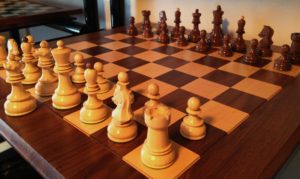 EL AJEDREZ. CUBA, PRIMER PAÍS DEL NUEVO MUNDO EN SU PRÁCTICA.
EL AJEDREZ. CUBA, PRIMER PAÍS DEL NUEVO MUNDO EN SU PRÁCTICA.
Fue Cuba en 1518, primer país del Nuevo Mundo en el que se practica el ajedrez, según lo atestiguan documentos históricos y en 1861 es “El Dorado de Ajedrez” la primera revista especializada en ajedrez de Latinoamérica.
En 1518 ocurrió el primer juego de ajedrez en la isla de Cuba, realizado por un grupo de oficiales españoles en la villa de San Salvador de Bayamo. Ya en 1826 su práctica se hacía patente en las ciudades de la Habana y Bayamo.
Próceres de la Patria cubana jugaron al Ajedrez: Carlos Manuel de Céspedes tradujo del francés “Las leyes del juego de Ajedrez”, José Martí también jugaba, e incluso se conserva una partida suya. Otros destacados cubanos como Antonio Maceo, Perucho Figueredo, Juan de Jesús de Fornaris, etc., también jugaban Ajedrez.
El hecho de haber tenido a partir de 1840 una revista mensual especializada en ajedrez y de efectuarse en Cuba 2 campeonatos mundiales antes del surgimiento del fenómeno Capablanca, nos da idea del desarrollo de este deporte en Cuba. Y si lo agregamos como 3er Campeón Mundial y uno de los mejores ajedrecistas de todos los tiempos, hay motivos de sobra para esta publicación.
Pero hay más , en el año 1836 llegó a La Habana el autómata, conocido por “El Turco jugador de Ajedrez”, inventado en 1769 por el sabio Wolfgang Kempelen, austriaco, aparentando ser una máquina de jugar ajedrez. En la capital ofreció pocas exhibiciones por haber contraído la fiebre amarilla el jugador que se ocultaba en su interior por entonces, el francés Schlumberger.
Pablo Morphy, uno de los grandes del Ajedrez de todos los tiempos, arriba a La Habana en 1862, procedente de New Orleans, en tránsito para España. Aprovechó su estancia del 16 al 30 de Octubre, para brindar una exhibición de Ajedrez a ciegas contra aficionados.
En 1863, Celso Golmayo, abogado, campeón de Ajedrez de España, fija residencia en La Habana, como Fiscal del Tribunal Contencioso. Su fuerza de juego contribuyó al mejor progreso del Ajedrez en la capital. En 1864 de nuevo Morphy visita Cuba, esta vez procedente de Europa en tránsito a New Orleans. Entre sus adversarios figuró Celso Golmayo, quien ya se consideraba campeón de Ajedrez de Cuba.
El 15 de Septiembre de 1885, queda establecido oficialmente el “Club de ajedrez de La Habana”. Entre los asiduos concurrentes a ese club figuraba el sabio cubano Carlos J. Finlay, descubridor de la fiebre amarilla. Por sus salones transitaron celebridades del mundo del ajedrez que unieron los siglos XIX y XX, entre ellos W. Steinitz (1888, 1889 y 1892); M. Chigorin (1889, 1890 y 1892); I. Gunsberg (1890); J.H. Blackburne (1891), Enm. Lasker (1893, 1906 y 1921); H.N. Pillsbury (1900); F. J. Marschall (1913); A. Aliojin (1939); R. Fine (1942); M Euwe (1945), entre otros.
En 1889, durante los meses de Enero a Marzo, se enfrentaron en La Habana por el título mundial, Wilhelm Steinitz, austriaco, campeón mundial de Ajedrez y su retador Mikhail Tchigorin, ruso. Steinitz retuvo la corona imponiéndose a su adversario con el resultado de +10 -6 =1.
Tres años después, en 1892 y también en La Habana se realiza el segundo encuentro (revancha) Steinitz – Tchigorin. El evento se realizó en el Club de Ajedrez de La Habana, con un elegante y rico tablero, obra de un admirable artista de La Habana, en el que también habían jugado por primera vez en esta ciudad. Steinitz se adjudicó el triunfo de nuevo, esta vez en forma más cerrada: +10 -8 =5. (Datos publicados en la revista especializada “Pablo Morphy”, Enero de 1892)
José Raúl Capablanca, nace La Habana el 19 de Noviembre de 1888. Surge y se desarrolla en un medio propicio, en esta capital con dos campeonatos mundiales, visitas de Morphy, una revista de ajedrez mensual… Su desarrollo se completa en los salones del Manhattan Chess Club de Nueva York, donde con solo 17 años tiene ya la oportunidad de jugar contra el entonces Campeón Mundial Emanuel Lasker a quien derrotaría 15 años más tarde disputando el cetro mundial. Pero Capablanca merece otra publicación. Ya por esta es bastante…
Notas:
Una alumna de Capablanca, Maria Teresa Mora Iturralde, fue la primera maestra internacional de ajedrez en Iberoamérica y primera mujer campeona de ajedrez en Cuba, ganando en 1922 la Copa Dewar, del Club de Ajedrez de La Habana, que entonces se consideraba como el campeonato de Cuba y solo participaban jugadores hombres.
En 1958 Eldis Cobo asiste al Campeonato Abierto de los Estados Unidos, celebrado en Rochester, New York, y termina en primer lugar, logrando el Título de Maestro de la Federación Norteamericana de Ajedrez.
Agencies/MemoriasCubanas/ Derubín Jácome/Internet Photos/ Arnoldo Varona/ TheCubanHistory.com
THE CUBAN HISTORY, HOLLYWOOD.




